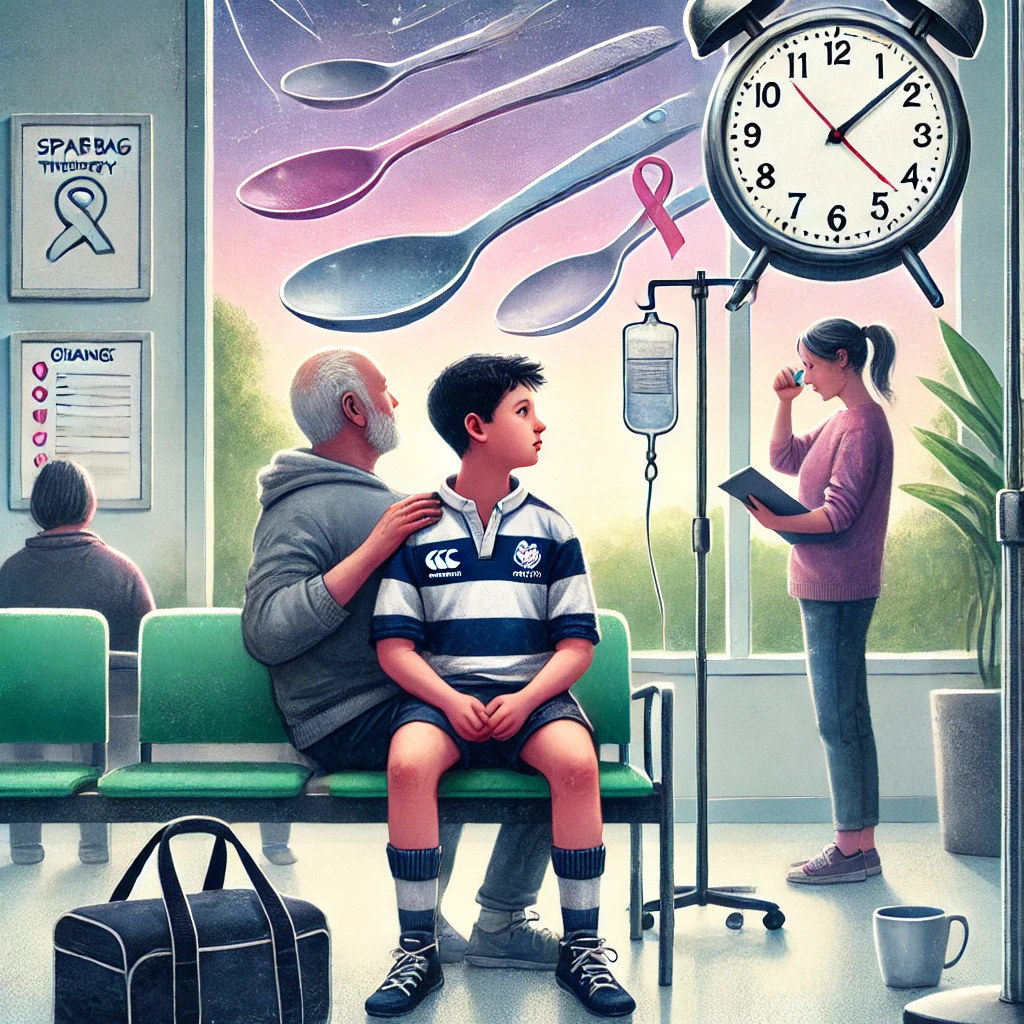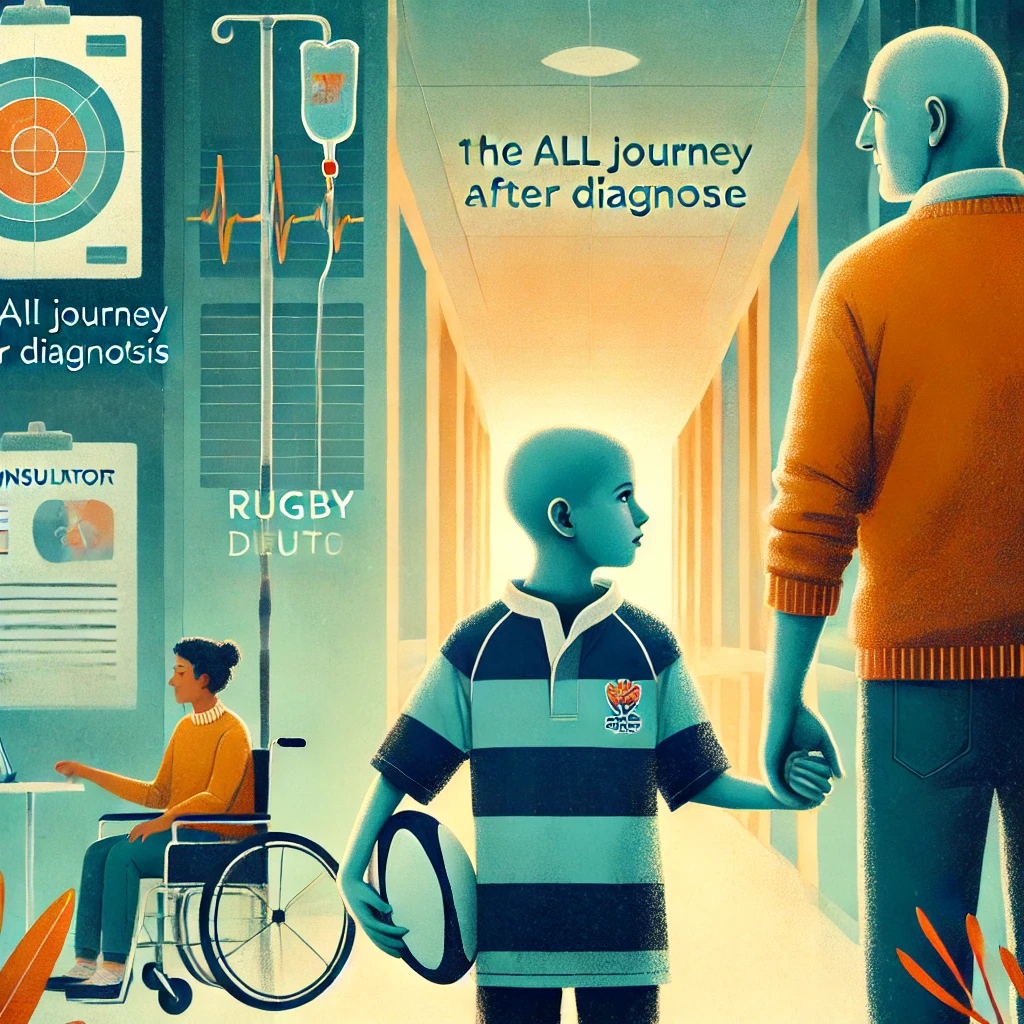Phases, Blocks & Cycles – The Season Plan in the Fight Against ALL 🏉
Right team—this one’s a biggie. When your child is diagnosed with Acute Lymphoblastic Leukaemia (ALL), you suddenly get handed this massive game plan with words like “induction,” “consolidation,” “delayed intensification,” and “maintenance.”
Feels a bit like you’ve been thrown into a rugby match halfway through and you’re not sure which end you’re supposed to be scoring in. We’ve been there. It’s confusing. Overwhelming. And the last thing you want is to miss an important appointment or not understand what’s coming next.
So here’s your rugby-themed breakdown of the ALL treatment phases, made simple enough for a 10-year-old rugby champ to get their head around—and hopefully helpful for parents too.
🏉 The Season Ahead – What Are the Phases?
Think of the ALL treatment plan like a long rugby season. You’ve got multiple matches (blocks) within each tournament (phase), and how you play in each one depends on how the team is performing (blood counts) and how tough the opposition is (risk levels).
Here’s the general game plan:
- Induction Phase – The Kick-Off
- Consolidation Phase – The First League Stretch
- Delayed Intensification – The Tough Mid-Season Clashes
- Maintenance Phase – The Long Game to Victory
Each phase has blocks (mini rounds) and cycles (tactics), and yes—it can get a bit much. But we’ll walk it through like a playbook.
🏉 Phase 1: Induction – The Kick-Off Match
This is the first big test—getting the team onto the field and going all out from the first whistle.
💉 It’s full of steroids, lumbar punctures, blood tests, and strong chemo.
🩸 The goal here? To reduce the leukaemia cells as much as possible and aim for remission—but it doesn’t always happen straight away.
📆 Expect frequent hospital visits and tests—this phase is intense.
🥴 You’ll feel like you’re living at the hospital. That’s normal.
Some kids reach remission after Induction, others (like Sammy) still have some bad guys lingering in the blood on a molecular level, so treatment needs adjusting. That’s still part of the plan—it just means the battle goes a little deeper.
🏉 Phase 2: Consolidation – The League Begins
This is where Sammy is right now. The team’s finished the opening rounds and is now going deeper to secure control of the pitch by stopping those sneaky leukaemia cells from making a comeback.
This phase comes with its own cycles and blocks, each one with different chemo combinations and timings.
🧪 Each block depends on how the previous one went, and whether your child’s blood counts are strong enough to move forward.
⚠️ We actually missed a lumbar puncture due to a miscommunication during this phase – something we were gutted about at the time. But we learned it wasn’t the end of the world. Still, this is why it’s SO important to:
✅ Track every event on a calendar or planner
✅ Double-check appointments with your team
✅ Ask questions, even if you think it’s silly
🏉 Phase 3: Delayed Intensification – The Hard-Hitting Mid-Season
This is the brutal winter away games. Chemo comes back harder to make sure nothing sneaky is left behind. It’s tough on the body and the emotions.
👂 You’ll hear phrases like “high dose,” “more LPs,” and “risk stratification.”
🧠 And you’ll wonder how your kid is so flipping strong through it all.
Just remember – this block is essential to preventing relapse, especially if your child’s risk level was medium or high.
🏉 Phase 4: Maintenance – The Long Haul to the Trophy
This is the final stretch – think of it like top of the league but needing to stay focused until full time.
Your child might look and feel more normal during this time, but they’re still on treatment. Oral chemo, monthly check-ins, and occasional LPs are still part of the game plan.
🏁 The goal? Stay in remission and keep those cells from ever coming back.
🏉 No One Size Fits All – Every Team Has a Different Playbook
This is really important:
Not every child’s journey is the same. Some skip a block, others get more time between cycles because their blood counts aren’t strong enough to move forward.
That’s OK. That’s normal. The game is fluid, and the coaches (your consultants) are adjusting the plan based on how your child is responding.
🧠 Top Tips for Parents in the Stands
✔️ Stay on top of appointments. Write it down, set reminders, and check in with your team.
✔️ Ask if unsure. Don’t be afraid to clarify. Even twice.
✔️ Get to know the lingo. Blocks, LPs, intrathecal, consolidation – it’ll start to click, promise.
✔️ Be kind to yourself. The first few weeks are pure chaos, but over time you find your rhythm.
You start to get used to the playbook. You know what each blood test means. You spot when your little warrior is going downhill before the numbers even say it.
🏉 Where Sammy’s At
Right now, Sammy is in early Consolidation 1, but he’s not in full remission just yet. The docs found some lingering bad guys on a molecular level, so the plan’s been tweaked. More treatment, more grit, and more fight – but we’re ready.
Final Whistle
This journey isn’t easy, but when you break it down into phases, blocks, and cycles, you start to see the pattern, the purpose, and the plan.
You’re not just surviving – you’re game-planning your way to victory.
Keep going. One tackle, one try, one step at a time. 🏉💪🔥
#SlamminSamB #ALLAwareness #RugbyVsCancer #OneTeamOneFight





You must be logged in to post a comment.